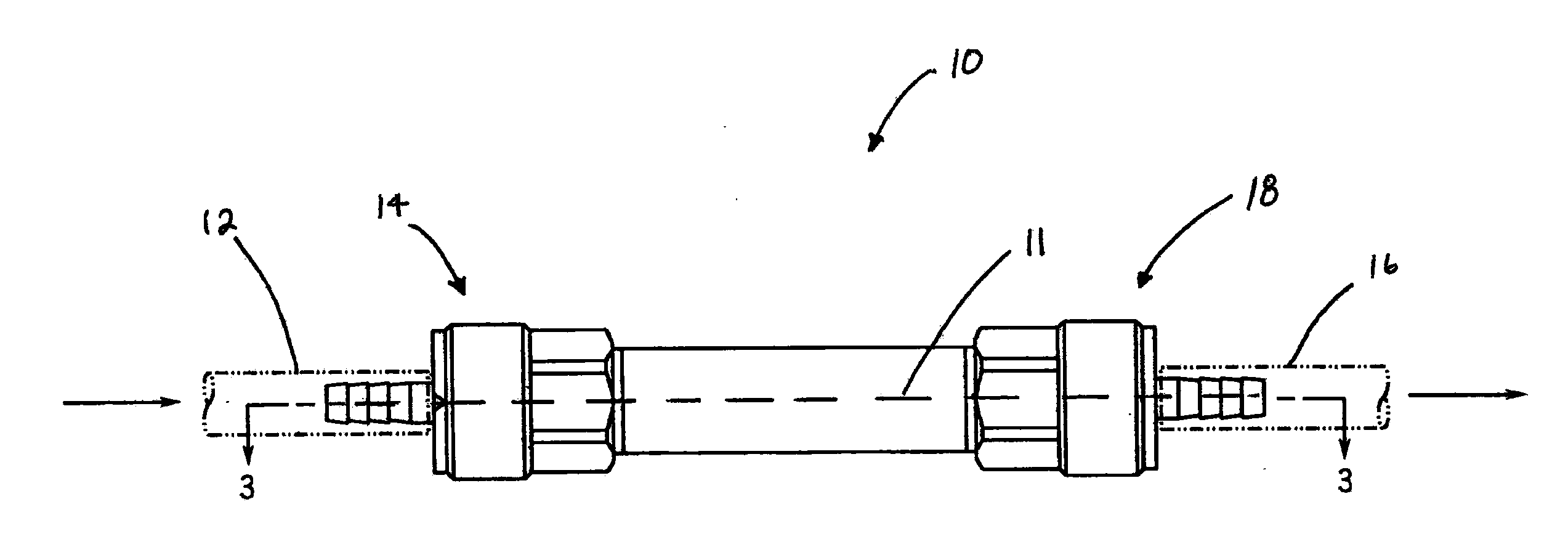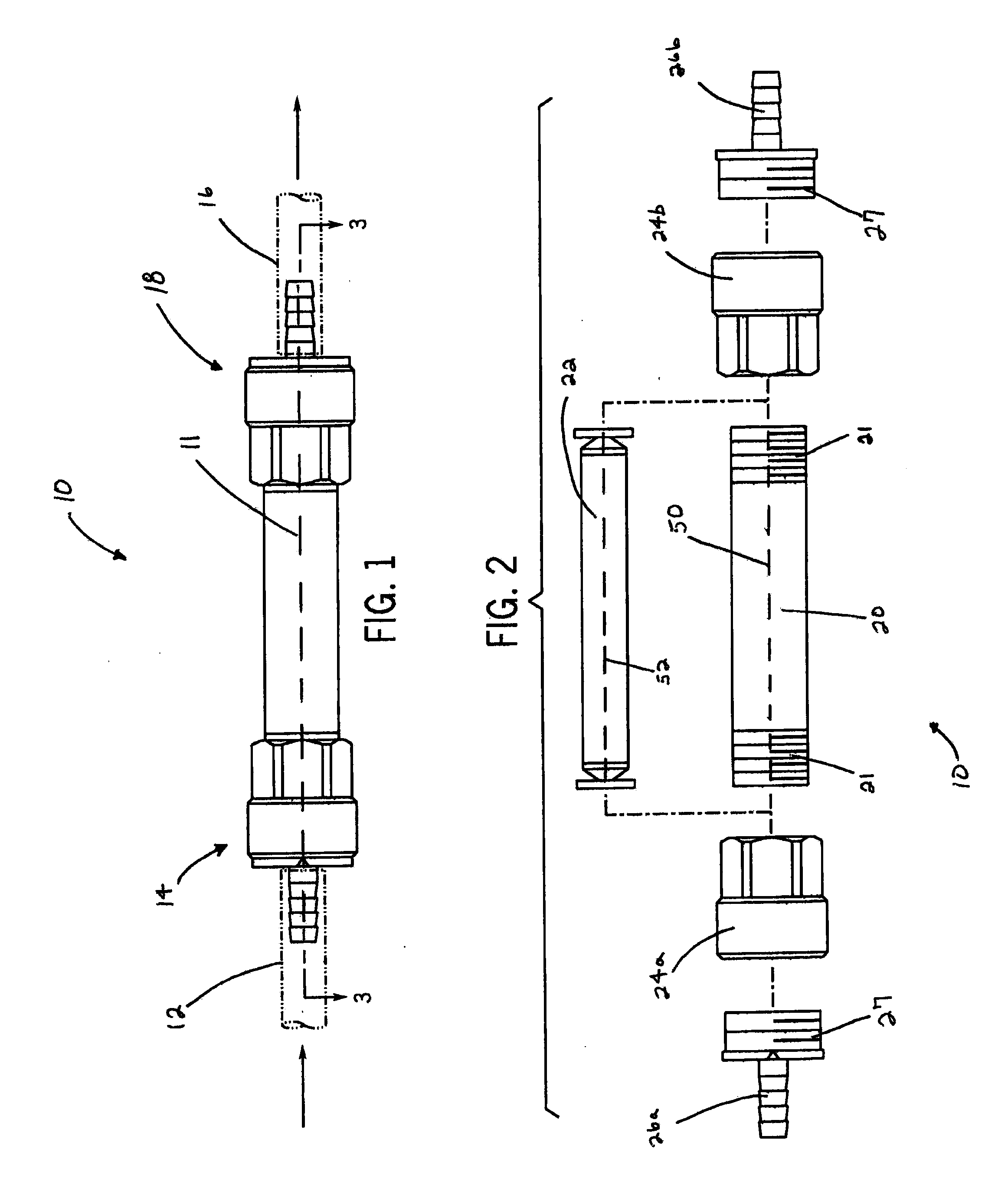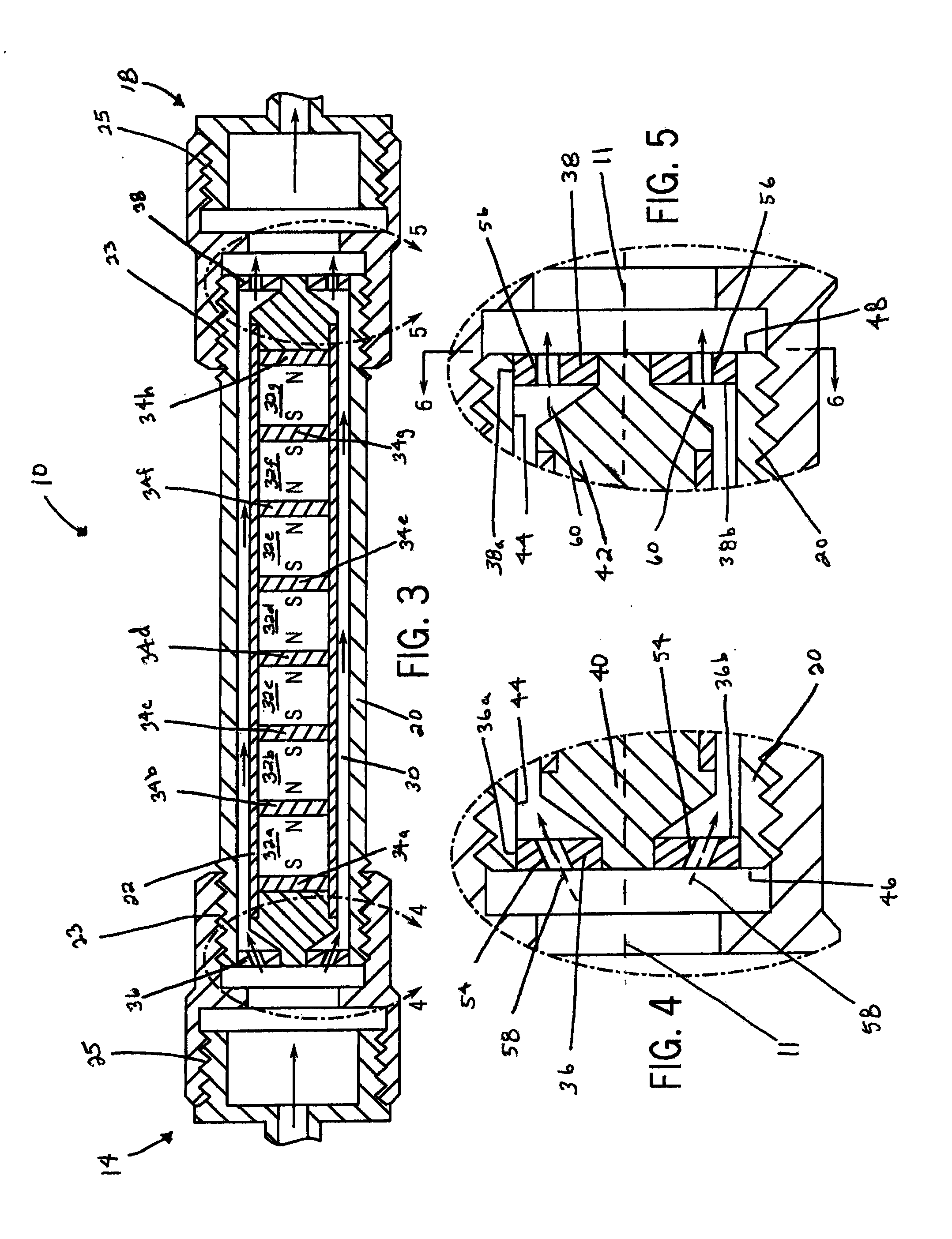In-line fuel conditioner
a fuel conditioner and fuel technology, applied in the field of fuel conditioners, can solve the problems of engine emissions, environmental degradation, carbon monoxide, hydrocarbons and nitrogen oxides, etc., and achieve the effect of improving fuel combustibility and reducing emissions
- Summary
- Abstract
- Description
- Claims
- Application Information
AI Technical Summary
Benefits of technology
Problems solved by technology
Method used
Image
Examples
Embodiment Construction
[0029]FIG. 1 displays the in-line fuel conditioner 10 in its assembled state placed in-line a fuel delivery system. The arrows in FIG. 1 show the direction fuel generally flows through the fuel delivery system for the internal combustion engine (not shown) through a longitudinal axis 11 of the in-line fuel conditioner 10. The in-line fuel conditioner 10 may be placed downstream of a fuel pump (not shown) and fuel filter (not shown)—if the apparatus with the internal combustion engine has such features—but is placed upstream of the fuel injection apparatus (not shown) that delivers fuel to the internal combustion engine. As seen in FIG. 1, the fuel line can be described as an entrance fuel line 12, which is in fluid communication with the fuel inlet 14 of the in-line fuel conditioner 10, and an exit fuel line 16, which is in fluid communication with the fuel outlet 18 of the in-line fuel conditioner 10.
[0030]Referring now to FIG. 2, the in-line fuel conditioner 10 is shown partially ...
PUM
| Property | Measurement | Unit |
|---|---|---|
| magnetic | aaaaa | aaaaa |
| magnetic poles | aaaaa | aaaaa |
| angle | aaaaa | aaaaa |
Abstract
Description
Claims
Application Information
 Login to View More
Login to View More - R&D
- Intellectual Property
- Life Sciences
- Materials
- Tech Scout
- Unparalleled Data Quality
- Higher Quality Content
- 60% Fewer Hallucinations
Browse by: Latest US Patents, China's latest patents, Technical Efficacy Thesaurus, Application Domain, Technology Topic, Popular Technical Reports.
© 2025 PatSnap. All rights reserved.Legal|Privacy policy|Modern Slavery Act Transparency Statement|Sitemap|About US| Contact US: help@patsnap.com



